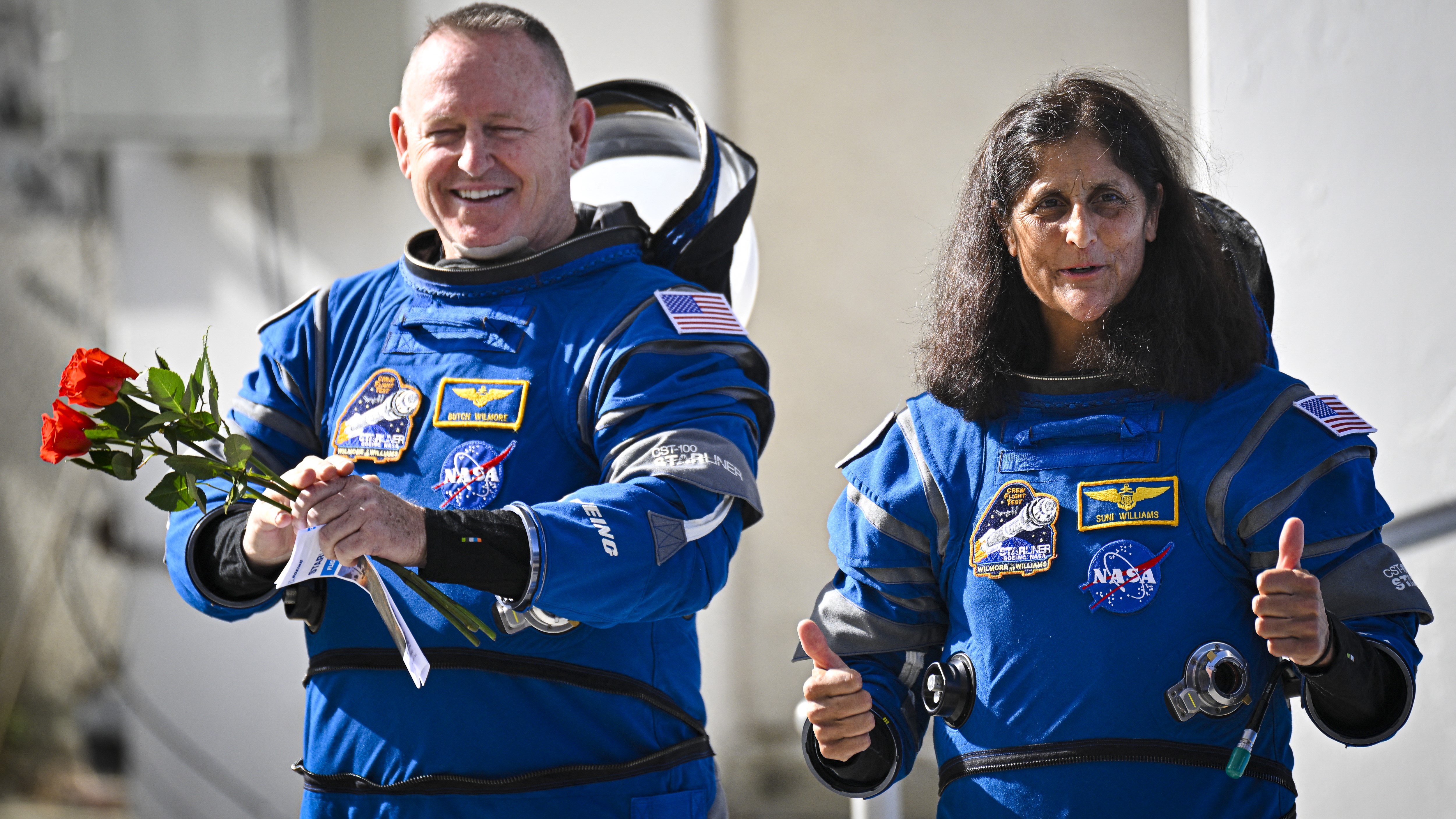
There is still no return date for Boeing's stranded Starliner astronauts, who have been stuck on the International Space Station (ISS) since June after their spacecraft developed multiple issues, NASA has announced.
Butch Wilmore and Sunita Williams rode to orbit in Boeing's spacecraft following years of delays, successfully blasting off on Starliner's inaugural crewed flight from Florida's Cape Canaveral Space Force Station on June 5. They were scheduled to stay a week in orbit.
But during the flight the spacecraft suffered a series of issues, including five helium leaks and five failures of its reaction control system (RCS) thrusters, forcing engineers to troubleshoot issues on the ground. This extended the two astronauts' stay aboard the International Space Station (ISS) to the current 50 days.
Yet NASA and Boeing say that even though ground tests have been completed, there is still no clear date for a flight home.
"We don't have a major announcement today relative to a return date," Steve Stich, the program manager for NASA's Commercial Crew Program, said at a news conference on Thursday (July 25). "We're making great progress, but we're just not quite ready to do that."
When the astronauts will return remains unclear, but NASA officials have previously said that the spacecraft has enough fuel to remain in orbit until mid-August at the latest.
Stich said that NASA and Boeing may perform a test fire of the spacecraft "as early as next week." Following this review, Stich added, an undock time will be set.
Starliner was built as a part of NASA's Commercial Crew Program, a partnership between the agency and private companies to take astronauts into low Earth orbit following the retirement of NASA's space shuttle program in 2011. SpaceX's Crew Dragon also came from this initiative and has tallied 13 crewed flights since it began operating in 2020.
But Starliner's journey into orbit has been much more troubled. A software glitch on its first uncrewed test flight pushed Starliner onto the wrong orbit, and a second attempt was scrubbed due to a faulty fuel valve. Other issues, including problems with parachutes and the need to remove nearly a mile (1.6 kilometers) of flammable tape, also subsequently cropped up.

The current, third crewed flight attempt was briefly delayed by issues with a vibrating oxygen valve and a small but persistent helium leak. Engineers ultimately deemed the craft safe to fly despite those issues. After liftoff, the leaks multiplied and several thrusters conked out, delaying the craft's docking with the ISS's Harmony module and later postponing its return to Earth.
NASA officials say the spacecraft is still safe, and that the return has been delayed this long so that scientists can collect as much data as possible on the malfunctioning RCS thrusters before they are jettisoned and burn up upon reentry.
"The last several weeks have been really useful in understanding thruster and helium anomalies and how to address these problems for future flights," Mark Nappi, Boeing vice president and the manager of the company's commercial crew program, said at the news conference. "That's been the real goal here."
To better understand how these thrusters — which are essential for tilting the craft at the right angle to enter Earth's atmosphere — might behave, engineers at Starliner's facility in White Sands, New Mexico, have been disassembling copies of them, inspecting them part by part for potential faults, and firing them to collect data.
During their extended time aboard the ISS, Wilmore and Williams have performed a number of maintenance tasks and scientific projects. Once a week, they have returned to the Starliner capsule to work through the thruster issues with engineers at ground control.
The astronauts' stay has been largely safe but not entirely without incident. On June 27, a defunct Russian satellite broke apart in orbit, sending debris toward the ISS and forcing Williams and Wilmore, along with the other seven astronauts on board, to take cover inside their respective space capsules.
Speaking at a July 10 news conference beamed from the ISS, Wilmore and Williams told reporters that they were confident Starliner could return them to Earth safely.
When asked about backup plans to return the astronauts without Starliner, Stitch said that contingency plans involving SpaceX's Crew Dragon have been looked into, but their focus was on using Boeing's craft.
"Obviously the backup option is to use a different system. I would rather not go into all those details until we get to that time — if we ever get to that time," Stitch said. "We really have our team focused on, as we close in on this final flight rationale, returning Butch and Suni on Starliner."







